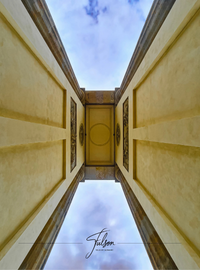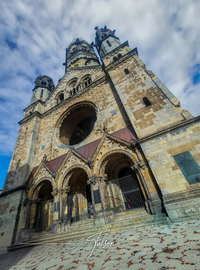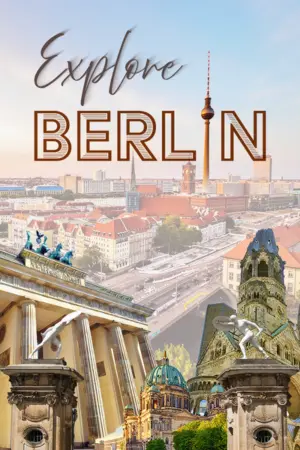- Home
- Top German Cities To Visit
- unique things to do in berlin
Unique Things to do in Berlin: More Than a Museum or Two
By: Eran Fulson / Traveler & Blogger / After 15+ years of travel across North America and Europe, I now help travelers experience Germany beyond the guidebooks with firsthand tips and cultural insights.
Published: July 6, 2023 | Updated: January 30, 2025
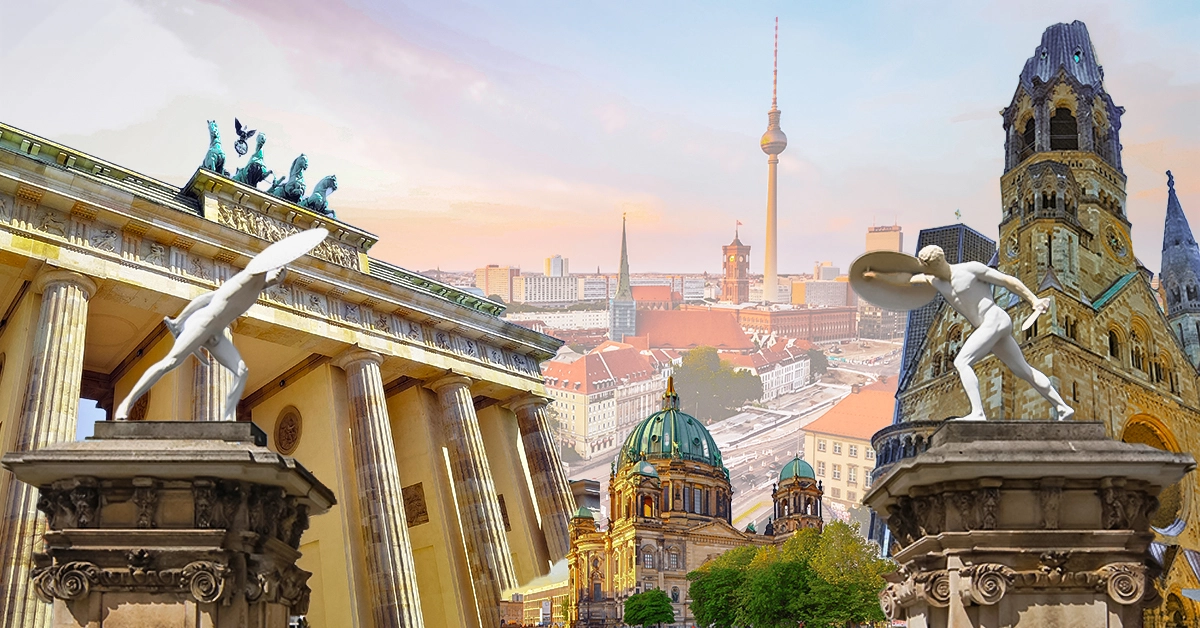
On this page:
Few cities can match the cycle of change and upheaval that Berlin has seen over the past eight centuries. Events, especially over the last 80 years, have gone on to define and redefine the capital of Germany. The culmination of this has led to an array of unique things to do in Berlin.
FIY - Be sure to check out my 3-Day Berlin Itinerary for helpful tips on how to make the most of your next trip to Berlin.
Personal Gallery:
A Bit of This Before That
Berlin’s first seven hundred years were par for the course in comparison to many of Germany’s cities.
Since its first recorded mention in 1244, early settlements established themselves as centers for merchant trade along the Spree River.
The current metropolitan districts, Spandau and Köpenick, were medieval settlements dating back to the 8th century.
The 13th–15th centuries saw the merging of various settlements into a singular Berlin establishment. By the 18th century, expansion in all directions led to Berlin’s development of economic and infrastructural dominance.
Getting Here and There
Let’s start with the easy part. Flying into Berlin Brandenburg Airport (BER) is undoubtedly one of the easiest ways to arrive internationally.
Servicing the vast majority of global arrivals with many direct flights, Berlin Airport has its own railway station directly below Terminal 1 for direct city center access, taking roughly 30 minutes.
Speaking of railway access, if you’re already in Europe, Berlin also facilitates ICE high-speed trains with connections to Austria, France, Switzerland, and Belgium.

interesting fact
ICE trains reach speeds up to 186 mph (300 kph).
Berlin has an extensive and well-developed public transportation network that includes S-Bahn (above-ground trains), U-Bahn (subway), buses, and Straßenbahn (streetcars).
Be aware that traveling without a ticket will result in a fine of 60 Euros. Even those forgetting to have their ticket stamped face a fine, and claiming touristy ignorance won’t get you far either.
FYI - not having a valid form of ID when stopped will get the police involved.
So, now that I’ve put you off ever stepping foot on public transport, an easy way to dodge the complications of tickets is to purchase the Berlin Welcome Card.
Besides having a range of unlimited travel options catering to your length of stay, the card also includes discounts up to 50% off at many of Berlin’s popular tourist attractions.
Who can resist a two-for-one?
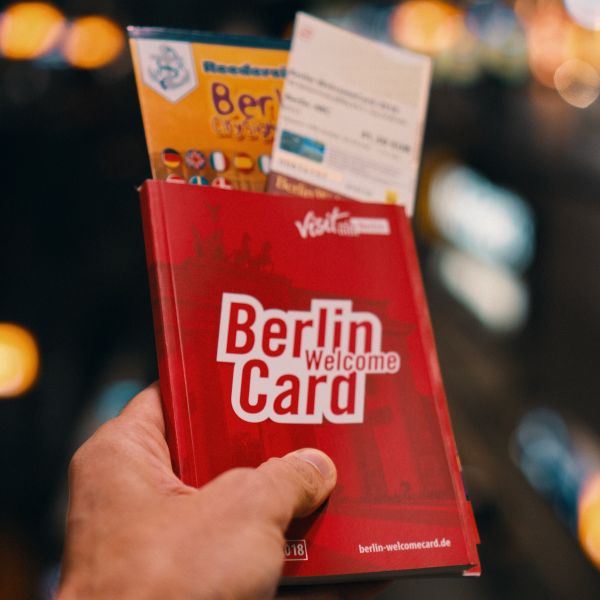 Savings to be found inside.
Savings to be found inside.Decision Averse
Allow me to explain myself for not delving into great depth about Berlin’s museum offerings.
Simply put, there are more museums here than there are rainy days. With around 170 museums to explore, please forgive me for brushing past a few of them.
After the first couple dozen ‘Museum of…’ they all start to blend together into a kind of extreme bandwurmwörter (tapeworm words). Narrowing the list down a bit (quite a lot), we’ll go with...
History Isle
In the historical heart of Berlin (literally and metaphorically), there is a UNESCO World Heritage Site, Museum Island.
Found on the northern point of Spree Island, Museum Island is a complex of museums and one of Europe’s most valued sites of historical interest.
Five museums make up the site and are included on the aforementioned Berlin Welcome Card, and they are:

Altes Museum (Old Museum) - While the name slightly gives away its status, the Altes Museum is indeed the granddaddy of the group. Completed in 1830, this Neoclassical building houses an impressive collection of ancient artifacts from the Etruscan, Roman, and Greek eras.
While the original intention was to humbly display the Prussian royal family’s own art collection, like my backyard, it has undergone numerous renovations since its inception.
Primarily, the museum’s collection focuses on Greek and Roman art and sculptures, with periodical special exhibits.
Also notable, the Altes Museum lays claim to the largest collection of Etruscan art outside Italy.

Neues Museum (New Museum) - In somewhat atypical fashion, the Neues Museum is not really all that new. Originally designed as an extension of the Altes Museum, it was built shortly after the Old was finished.
The Neues Museum contains the cultural history of European and Middle Eastern ancestors from the Stone Age to the Middle Ages. Despite severe damage during World War II, its Neoclassical style was retained during the restoration work.
One of the more unique pieces in its collection, and its main draw, is the Nefertiti bust, which is part of its Egyptian antiquities.
Other unique artifacts include a Barbarian treasure trove, restored sacrificial tombs, the Berliner Green Head, and the Berlin Gold Hat, among approximately 9,000 other exhibits.
Alte Nationalgalerie (Old National Gallery) - If, by now, you’ve assumed the Alte Nationalgalerie to have followed its Neoclassical brethren in appearance, you would be correct.
Though it wouldn’t surprise me if the thought hadn’t crossed your mind either.
Its one defining exception are the ancient temple-inspired pillars seemingly guarding the famous 19th century art works.
Adolph Menzel, Monet, Manet, and Renoir paintings grace the walls with enough aplomb that you’d think you were Prussian royalty as well - were it not for the other commoners standing around you.

Bode Museum - Breaking away from the classical pack, the Bode Museum stands as a Neo-Baroque building with a distinctively majestic dome.
The museum showcases a collection of sculptures, Byzantine art, coins, and Old Master paintings from the 3rd to 15th centuries.
TOP TIP
Due to extensive renovation work, the Pergamon Museum will be closed from October 2023 until 2027.
Pergamon Museum - If coins are too small to appreciate and after you've seen one painting, you’ve seen them all, the Pergamon Museum might have a chance to spark a bit of interest, if not by scaling up the exhibit.
Considered a visitor magnet to any other top Berlin museum (depending on who you ask), the Pergamon commands the visual experience by going big.
From the Pergamon Altar to the 55-foot-high Market Gate of Miletus, this is as close to living an archeological dream as you can find.
If nothing else, the shimmering blue Ishtar Gate from Babylon is sure to leave one speechless—before not-so-subtly grabbing a quick selfie when no one is looking.
 Feelin' blue
Feelin' blueTastefully Indiscrete
Staying on Spree Island, we find the Berlin Cathedral, and there is nothing subtle about it. It becomes obvious, even from hundreds of feet away, that this was meant to be noticed.
Under a directive by King Wilhelm II, the Berlin Cathedral was meant to challenge the likes of St. Peter’s in Rome and St. Paul’s in London.
Given that beauty is in the eye of the beholder, and is equally subjective, there is no denying that the ruling monarchy opened the coffers at no expense.
While the history of the cathedral dates back to the 15th-century, the current iteration was only finished in 1905 and carefully reconstructed after bombing damage during WWII.
The cathedral’s dome is unmissable from afar and is topped by an equally eye-catching golden cross.
The Italian High Renaissance architecture flows from the intricate exterior stonework to the interior, which is a work of art in its own right.
Notably, a marble and onyx altar along with a white marble baptismal font are only noticeable if you’ve managed to prise your eyes off the highly detailed ceiling.
It’s little wonder the cathedral is one of the top Berlin attractions and an iconic fixture along the Spree River.

Sunset Boulevard
Unter den Linden (under the linden trees) has a veritable poetic quality to what is actually a rather grand tree-lined boulevard linking Berlin Palace to the Brandenburg Gate.
Developed in the 16th century to facilitate Elector John George of Brandenburg being able to conveniently reach his hunting grounds, the Unter den Linden became a renowned status symbol of an expanding Berlin.
The original linden trees that lined the boulevard were eventually cut down during WWII and used as firewood, but they were replanted in the 1950s.
Lining the boulevard beyond the trees are many notable buildings, including the aforementioned Berlin Palace, the State Opera House, foreign embassies, St. Hedwig’s Cathedral, the Reichstag, and the famous Brandenburg Gate.
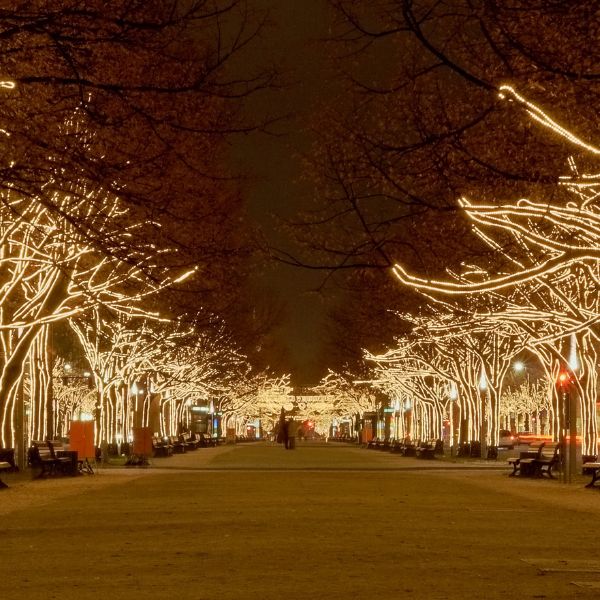
Easily one of Berlin’s most visited and photographed landmarks, the Brandenburg Gate became symbolic of Germany’s division and reunification.
The sandstone structure was completed in 1791 after three years of construction during the reign of Prussian King Frederick William II.
Its twelve columns are flanked by relief carvings and stand 66 feet (20 meters) high, 213 feet (65 meters) wide, and 36 feet (11 meters) deep.
Despite heavy damage during World War II, the gate was restored in 1958.
This restoration would be short-lived, as the gate became a symbol of the Communist division between East and West between 1961 and 1989. The Brandenburg Gate was situated in an exclusion zone along the Berlin Wall and was effectively off-limits.
That was until December 22, 1989, when the West German Chancellor, Helmut Kohl, walked through the gate to meet the East German Prime Minister, Hans Morrow, in a display of reunification and German solidarity.
Today, the imposing gate faces out towards the Pariser Platz, regarded by many as one of the city’s most beautiful squares.
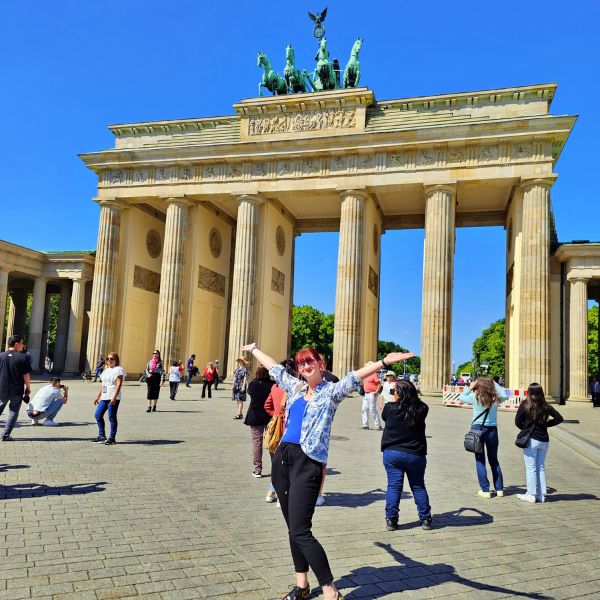 Lydia throwing a pose in front of the Brandenburg Gate
Lydia throwing a pose in front of the Brandenburg GateArt With A View
The East Side Gallery is an art collection like no other. The longest continuous stretch of the former Berlin Wall still standing at 4,317 feet (1,316 meters) long.
Immediately following German reunification and the fall of the Berlin Wall, 118 street artists from 21 countries began descending on the wall and adorning it with a striking visual display of unapologetic street art.
It is now the longest open-air gallery in the world, with more than 100 murals depicting a personal commentary on political change and unity.
While admittedly not to everyone’s artistic taste, the wall serves as a reminder not only of the division that was once rife in Communist Germany but also of the unification of East and West.
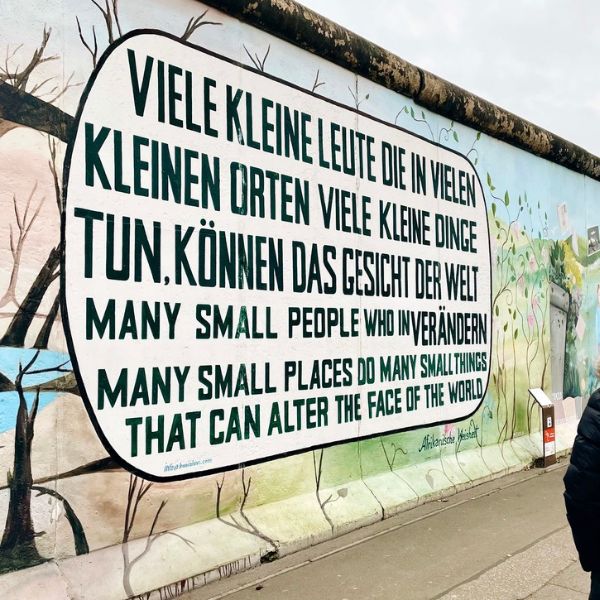
What Lies Below
Though much of Berlin has witnessed an overwhelming renewal on the surface, below the streets and war memorials lies a military underworld few would have seen, if even known existed.
The Berliner Unterwelten-Museum (Berlin Underworld Museum) is located in a former bunker within the Gesundbrunnen district.
Guided tours take you around the network of bunkers, secret corridors, and escape tunnels that proliferated the ground beneath Berlin’s streets.
Available with the Berlin Welcome Card is a discount for entry into the exhibition "Hitler’s Plans for Berlin: The Myth of Germania - Vision and Crime".
The experience is a worthwhile one for a deeper insight into what the future may have looked like had events not transpired as they have.

Disneyland Perestroika
File this under one of the more unusual places and unique things to do in Berlin: Spreepark.
Located in the Plänterwald area of the former Eastern Bloc, Spreepark is an abandoned former theme park launched during the era of the equally former GDR (German Democratic Republic / Communist East Germany).
The park officially opened in October 1969, one month before the fall of the Berlin Wall, and saw a respectable 1.5 million visitors a year.
After reunification, new attractions and several roller coasters were added. But these additions weren’t enough to compete with larger and more attractive theme parks only an autobahn drive away.
As the park began to fall into disrepair, attendance dropped until Spreepark officially closed its doors in 2001. Since then, the park has seen numerous incidents of vandalism and arson.
Though many urban explorers have climbed the fences and gone for a wander on their own, I’d wager your travel insurance wouldn’t look favorably on those exploits. Safer options would be one of the weekend guided tours on offer.
There are ongoing plans to revitalize Spreepark, one of Germany’s most memorable abandoned theme parks, into an arts and culture green space that aims to be finished by 2026.
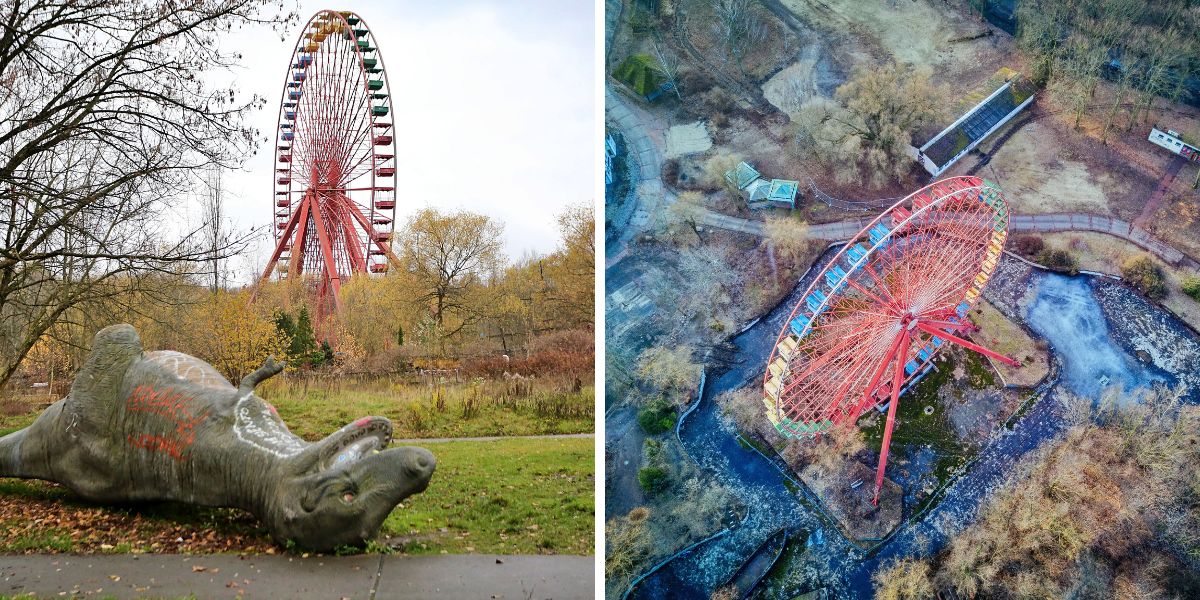
For Your Eyes Only
The shadowy underworld of espionage and spies has been enthralling people since ‘The 39 Steps' was released in 1935.
The spy enamour became undoubtedly solidified with James Bond making his debut, along with a myriad of gadgets to hand, or up his sleeve.
Disappointingly, the German Spy Museum does not feature an Aston Martin complete with tire spikes and lasers.
It does, however, exhibit a non-lethal dose of actual former spy equipment along with a history of early-day espionage by secret agents to the current NSA, MI6, and the like (or as much as they’ll let on).
The museum has over 1,000 exhibits and interactive installations, including a hands-off section featuring umbrellas with poison arrows, hidden pistol gloves, and shoes with bugging devices.
Rather poignantly, the German Spy Museum is located at Leipziger Platz, which was the former border between East Berlin and West Berlin.
Nearby Cold War attractions feature a GDR watchtower along the former ‘Death Strip’ of the Berlin Wall and the infamous Checkpoint Charlie.

Final Destination
Repurposing old items into new interpretations has become something of a learned skill in today’s material world. Tempelhof Airport is no exception to this repurposing exercise.
Once known as the 'mother of all airports’, which goes along with its temporary status as Europe’s largest airport, Tempelhof has had as chequered a past as any Berlin-based infrastructure.
Opened as an international port-of-call in 1939, the airport was one of the few large-scale Nazi architectural projects to almost reach completion. Politics and atrocities aside, it was an engineering marvel at the time.
The terminal was constructed in a grand curve that stretched nearly 4,000 feet. An ornate sandstone façade with relief carvings and sculptures complimented a giant aluminum eagle over the entrance, which stood as a testament to the Nazis allure of grandeur.
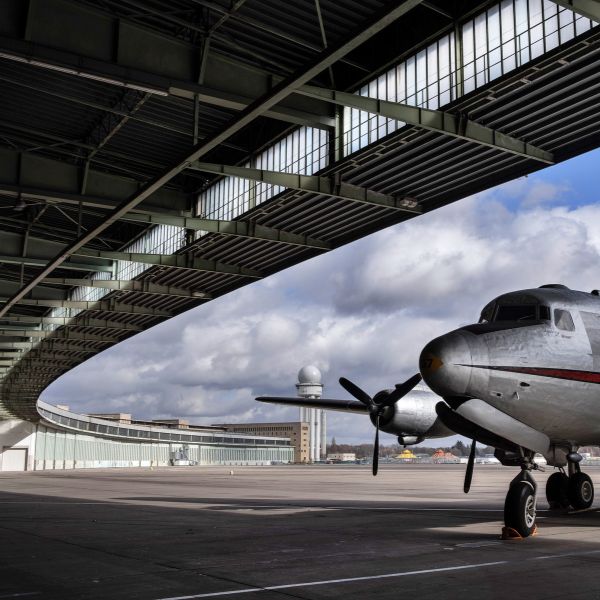
The Americans took control of Tempelhof after WWII after repeatedly bombing the airport. Throughout the Berlin Blockade during the Cold War, the airport served as a hub of relief.
At one point, supplies of medicine, food, and heating material were flown in almost every two minutes around the clock.
At its peak, Tempelhof saw six million passengers pass through its terminal in 1970.
However, it soon became less utilized as civilian planes grew in size and was only used by the US military until 2008, when its closure became permanent.
These days, Tempelhof Airport is known only as an airport by name and a public park by function.
Guided tours are available through the old buildings, while a 3.7-mile (6 km) cycle/running path, a 9.8-acre dog-walking field, and a 6.1-acre BBQ area make up the old runways and grounds.
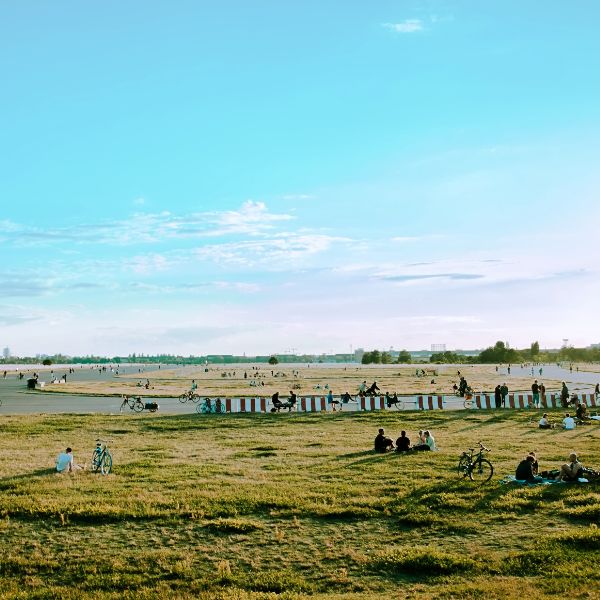
Reflective Solitude
The composed ruins of the Kaiser Wilhelm Memorial Church on Breitscheidplatz serve as a reminder of the ravages of war and the reconciliation of peace during WWII.
It’s now one of the most famous and visually impactful landmarks in the western city center.
The spire still remains at literal half-mast, having sustained heavy damage during the Allied air raids.
The Berliners rejected plans to demolish the ruined church and gave Egon Eiermann the task of creating a new church around the ruined structure.
The Gedächtniskirche (Memorial Church) once stood as a magnificent church commissioned by Wilhelm II in 1895.
Its bells were the second-largest in Germany after the Cologne Cathedral.
Stories have it that the bells rang so loudly during its inauguration that the wolves in the Berlin Zoo began howling. This would carry on until WWII, when the bells were eventually melted down for ammunition.
The church stands today as it has done since 1961, with services and concerts still held despite ongoing restoration work. It’s also the backdrop to one of Berlin’s biggest Christmas markets.

Eco Renaissance
Among the iconic landmarks of Berlin is the Reichstag Building. This Neo-Renaissance structure was completed in 1894 and serves as the lower house of Germany's national legislature.
Situated near the south bank of the Spree River, with Tiergarten Park to the west and the Brandenburg Gate to the south.
The Reichstag transitioned from the German Empire (1871–1918) to the Weimar Republic (1919–1933), when a fire of questionable coincidence spurred events that led to Hitler’s rise to political dictatorship.
Laying in disuse, the Reichstag sustained additional damage from WWII air raids and lay in ruins until 1970, when a partial restoration saw it become a German history museum.
The parliament building we see today came about after the reunification of East and West Germany in 1990.
A key rebuilding was the recognizably massive glass dome, which brings light from above directly into the debating chamber.
Further efforts were undertaken to expand on its eco-architecture. Biofuel generators complement its sizeable solar array on the roof, which brings the Reichstag closer to its 100% renewable resource target.
One of the best places to go when you’re there is up on the rooftop terrace and restaurant - pre-booking a table is required. Spectacular panoramic views are abundant and best enjoyed with a bit of food and a glass in hand.
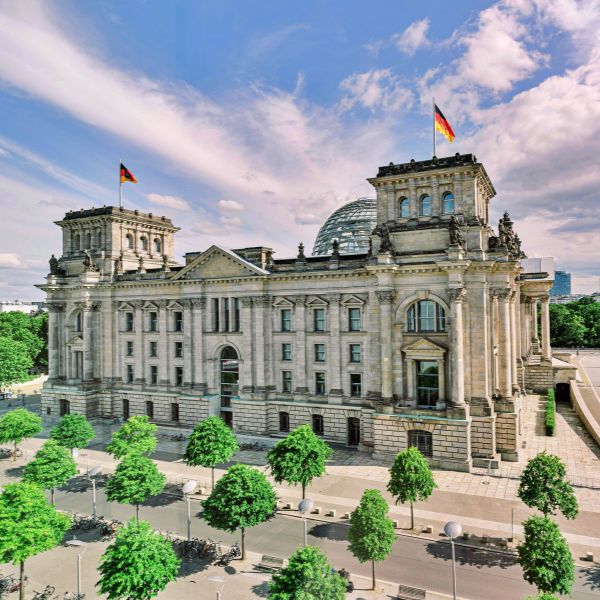
Those Who Went Before
There are a number of World War II memorials in and around Tiergarten, remembering the lives lost during one of the darkest chapters in Germany’s history.
Among them is a Soviet War Memorial, which also serves as a cemetery for 2,000 Red Army soldiers. The 14-acre site neighbors the Sinti and Roma Memorial, which commemorates the 500,000 who were taken in the Holocaust.
Across Ebertstraße is the Holocaust Memorial to the Murdered Jews of Europe. An area of more than 200,000 square feet is laid out with 2,711 concrete slabs of differing heights. Walking around the site gives a new perspective in every direction one looks.
Beginning of the End
Those who remember August 1961 may also recall the infamous ‘Jump to Freedom’ photograph of GDR policeman Conrad Schumann.
He became known as the first to cross the barrier, with roughly 2,000 soldiers following his lead in the coming decades.
While much of the wall has now been removed, the Berlin Wall Memorial at Bernauer Straße is also the site where the first concrete slabs were ceremoniously broken down in November 1989.
A 5-story watchtower gives a birds-eye view of the former border strip, while the Chapel of Reconciliation pays homage to the known 130 people who died attempting the crossing.
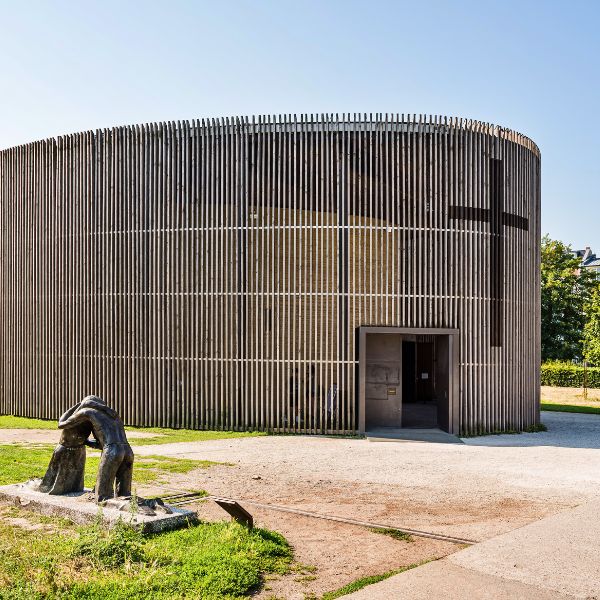 Chapel of Reconciliation
Chapel of ReconciliationSow's Ear to Silk Purse
A chequered past often precedes many of Berlin’s famous landmarks. No different is the Olympiastadion (Olympic Stadium) which achieved global notoriety during the 1936 Olympic Games.
Originally built by architect Werner March in 1936, it was intended to hold an audience of 100,000 people for propaganda events during the Nazi regime.
These days, 74,475 people gather to watch Hertha BSC play in the Bundesliga, along with athletic championships and open-air concerts.
Since reopening in August 2004, the five-star stadium has seen hundreds of thousands pass through its storied gates on non-event days, making it one of the top Berlin attractions.
Just outside of the stadium, and equally a highlight, is the Glockenturm (bell tower). Heading up to the top offers renowned panoramic views from Spandau to Potsdam and the vast expanse of the forested Grunewald.

Vibe Central
Nearly every major city has an alternative scene that crops up here and there, or, in some cases, entire districts.
As the city has redefined itself over the past 25 years into a united capital of Germany, Alternative Berlin has followed in lock-step as the alternative capital of Europe (a purely non-biased opinion, of course).
As far as districts go, Kreuzberg is full of cozy cafes, quirky shops, and small restaurants. Despite its popularity with roaming tourists, the district's locals appear to hold on to their own brand of individuality, with a chilled vibe emanating from every doorway.
A notable mention goes to Prenzlauer Berg in the former East Berlin. A sort of alternative-bohemian scene filled with comfortable cafes, small boutiques, and laden with beautiful architecture.
Quickly becoming one of the more desirable places to live in Berlin, it’s worth a cup of coffee just to watch the visual atmosphere literally walk by.
 Happily watching the world pass on by
Happily watching the world pass on byFinal Musings
I felt a bit of initial trepidation about covering Berlin. Granted, virtually all the towns and cities in Germany have written their own chapter of darkness during WWII and the following Cold War ordeals.
The undeniable vastness of war memorials and scarred landmarks brings into sharp focus the depths from which Berlin has had to rise from.
However, the weight of detailing these storied locations is reassured by the general positivity and all the unique things to do in Berlin. It’s a city worth visiting for the history, and staying a while for the memories.



